I’ve spent most of this week stretching and burnishing my pasty limbs on Southern England’s Jurassic Coast. Aware that the weather was going to be balmy and the beaches and footpaths inviting, I almost left my laptop at home. If I had you’d be reading reviews of Corfe Castle, the Swanage Railway, and Hattie Brown’s Moonlight today, not scattered thoughts on wargaming the Simba Rebellion and one of WW2’s dinkiest amphibious landings.
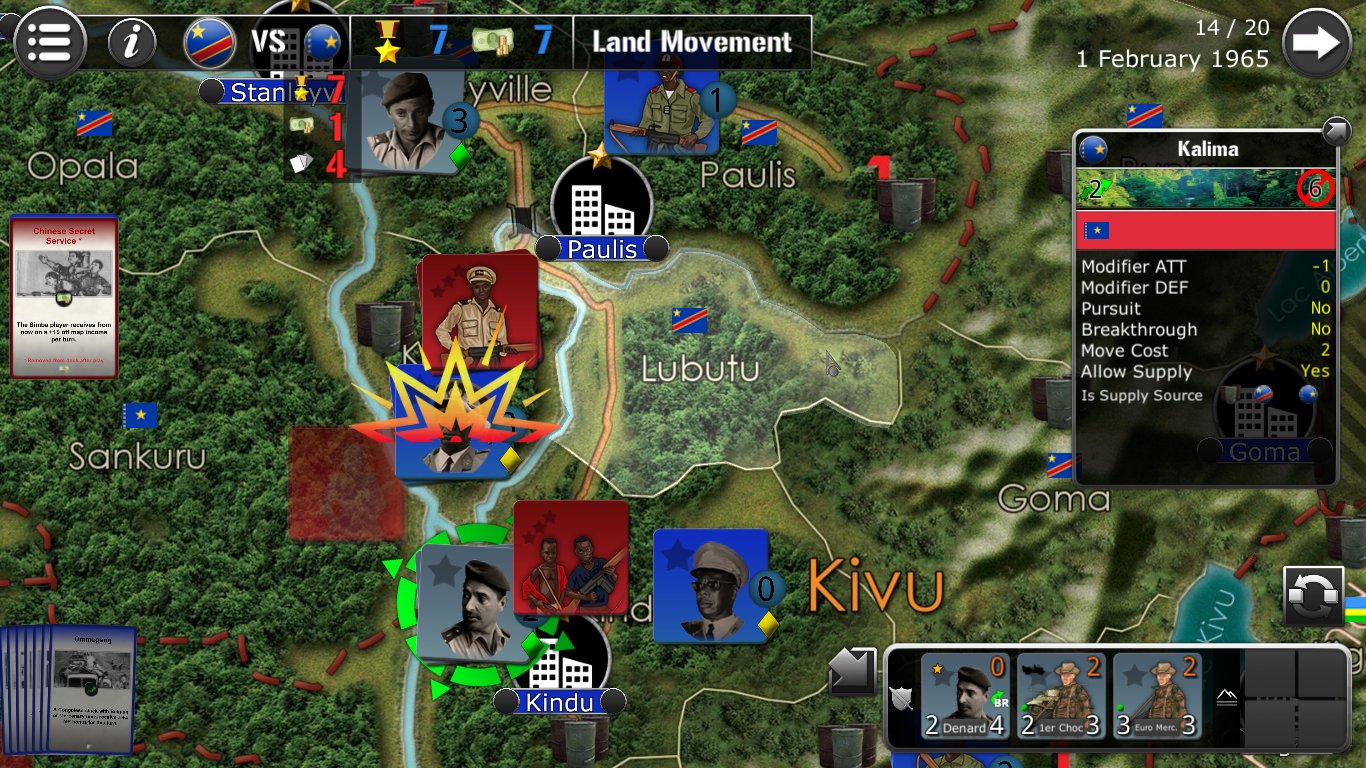
The lure of a relatively obscure 20th Century conflict? The awareness that I wouldn’t have to spend hours trudging through dense tutorials? Quite why I reached for Congo 1964, an old (2017), dirt-cheap Wars Across The World adjunct, on my first evening away, I really couldn’t say.
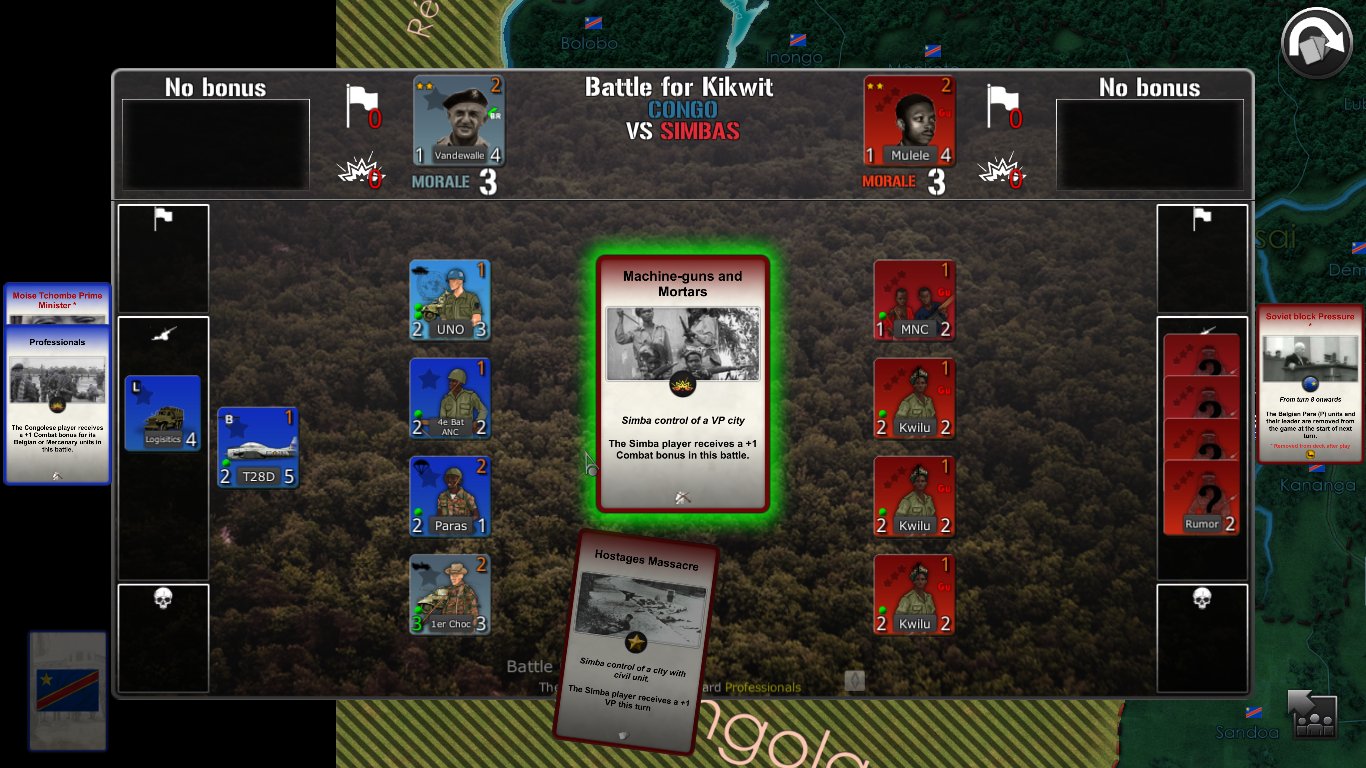
Like most WATW DLCs, Congo doesn’t offer much in the way of challenge. Anyone with series experience will have little trouble carving out wins as either the historical victors (the West-backed Congolese government) or the historical vanquished (the fractious Marxist rebels).
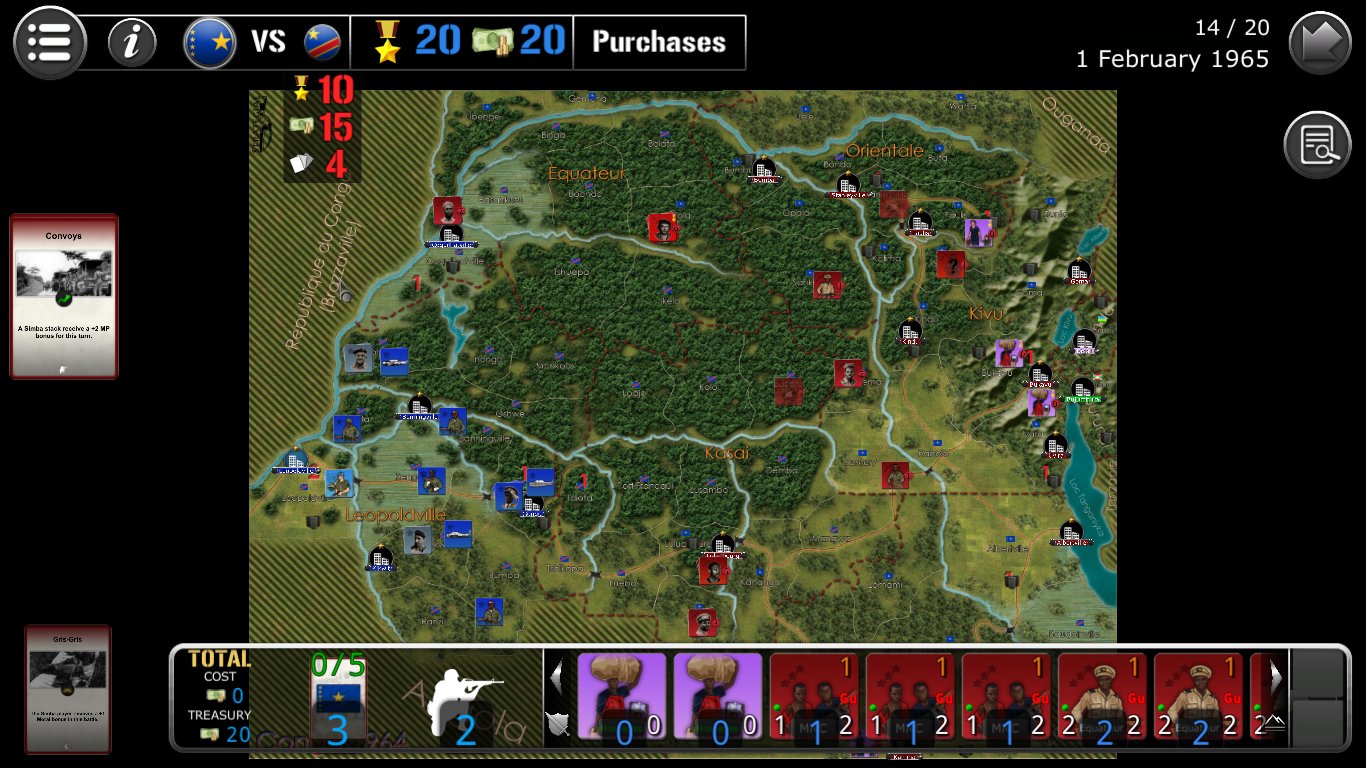
What Congo does offer is an incredibly colourful Order of Battle, and tactical twists found in few other digital war-em-ups. Leading the Simbas you’re encouraged to take civilian hostages, and mislead your opponent with phantom formations. At times the performance of your units – most of whom are classified as ‘guerillas’ meaning they aren’t susceptible to that classic WATW fate, death by supply interdiction – will be impaired by drugs and alcohol, or enhanced by faith in magic. Losing VPs as a result of senseless card-triggered massacres is a possibility too. The same event deck that announces atrocities also determines when the Simba’s celebrity CO shows up.
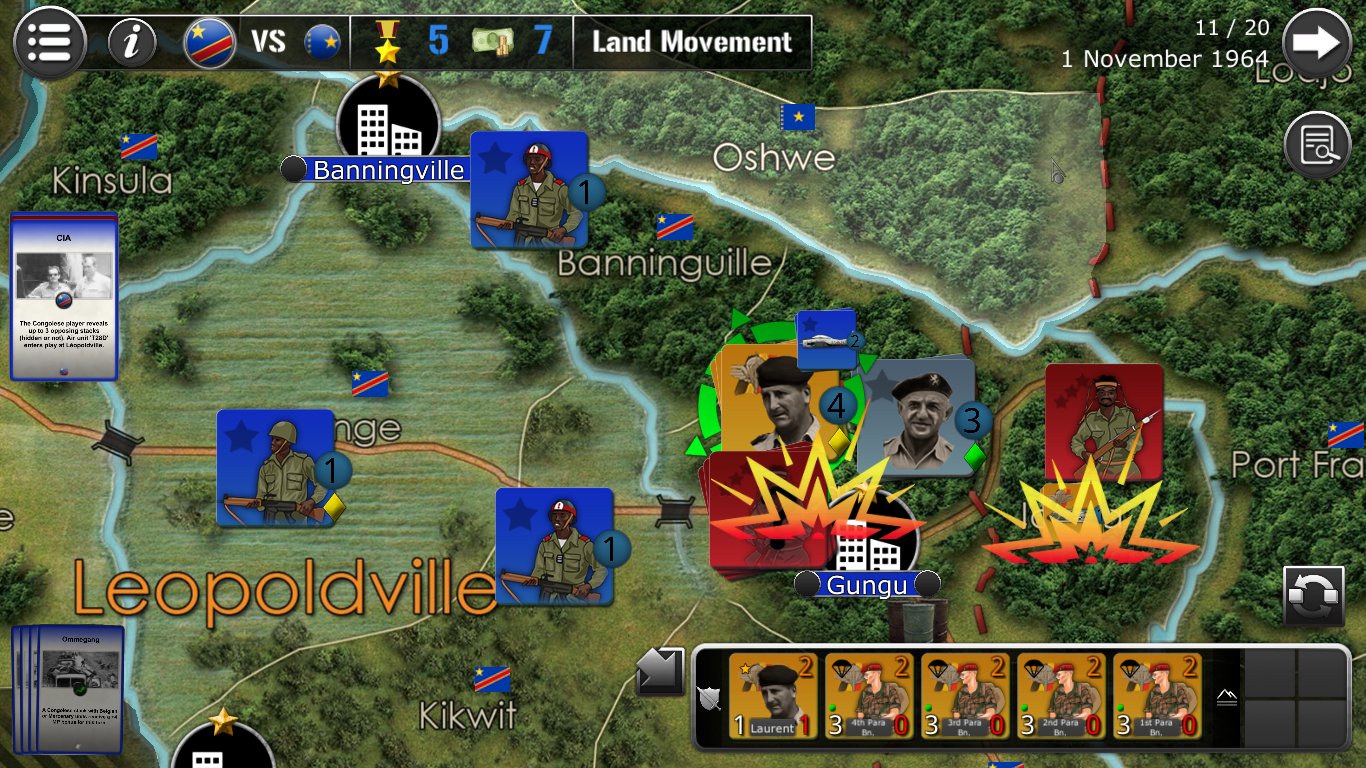
Assisted by CIA intel, Belgian forces, and a famous British merc on the ground, Mobutu’s side also finishes up with a potent miniature airforce courtesy of its various backers. During the course of the twenty month/turn scenario, the rebels get it in the neck from Texans, Trojans, and Invaders. Something even more dangerous than HE drops on them from C-130s – Belgian paratroopers. Given the assets at the government’s disposal, the CPU really should provide stiffer opposition when battling the insurgency.
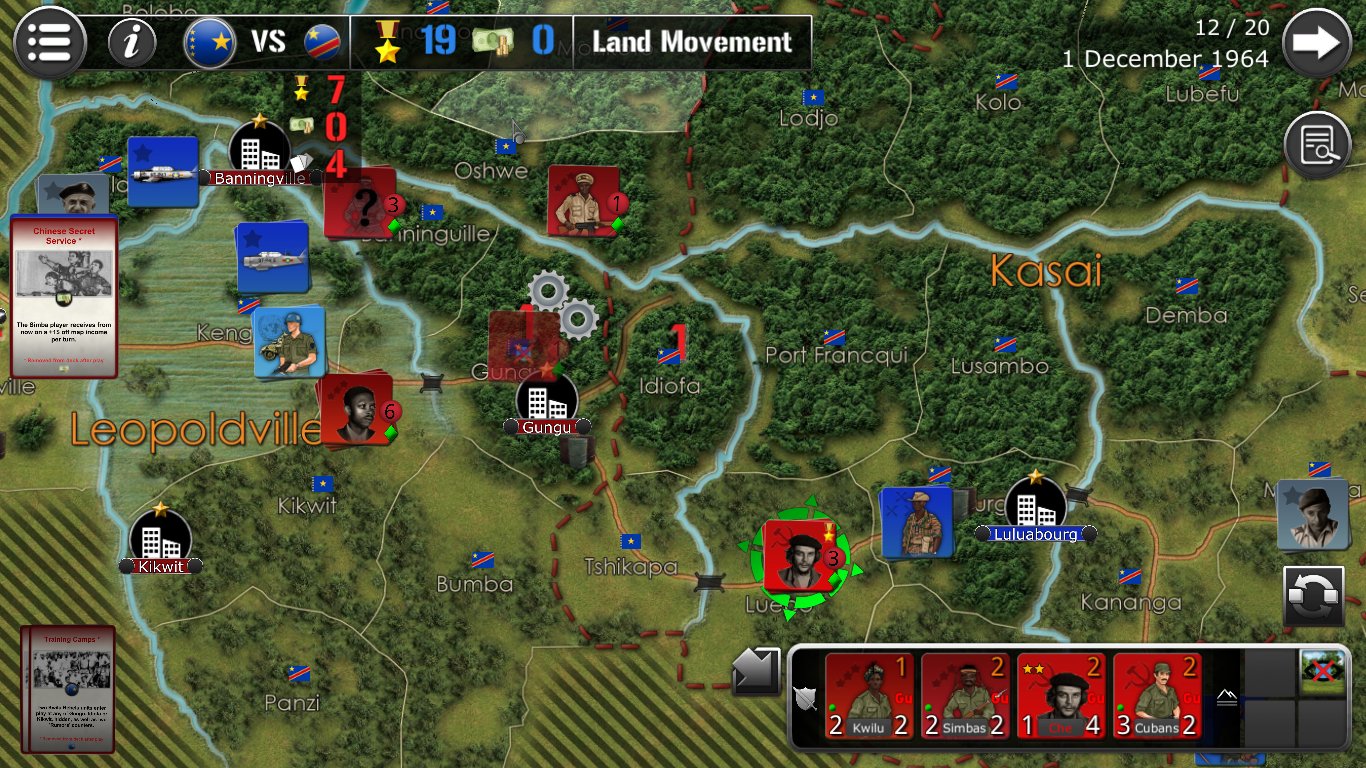
By chance my evenings in the Congo segue rather neatly into news that emerged from South Africa yesterday. Remember Every Single Soldier, the tiny outfit that gave us the refreshingly holistic Vietnam ’65 in 2015 and Afghanistan ’11 in 2017? Their next ‘hearts and minds’ wargame ludologises an African conflict that began less than a year after the Simba Rebellion was crushed.
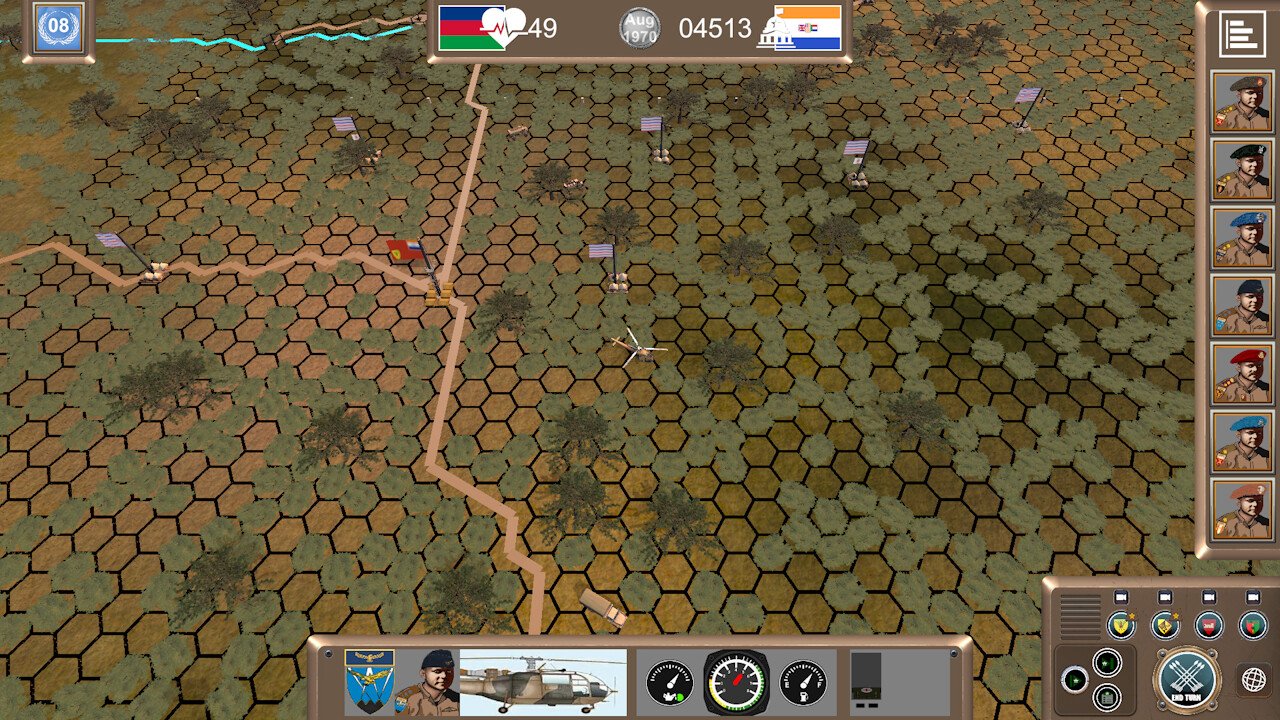
Graviteam has recreated epsiodes from the 23-year South African Border War before, but Angola ’86 will be the first time this complex Cold War clash gets a PC plaything all to itself.
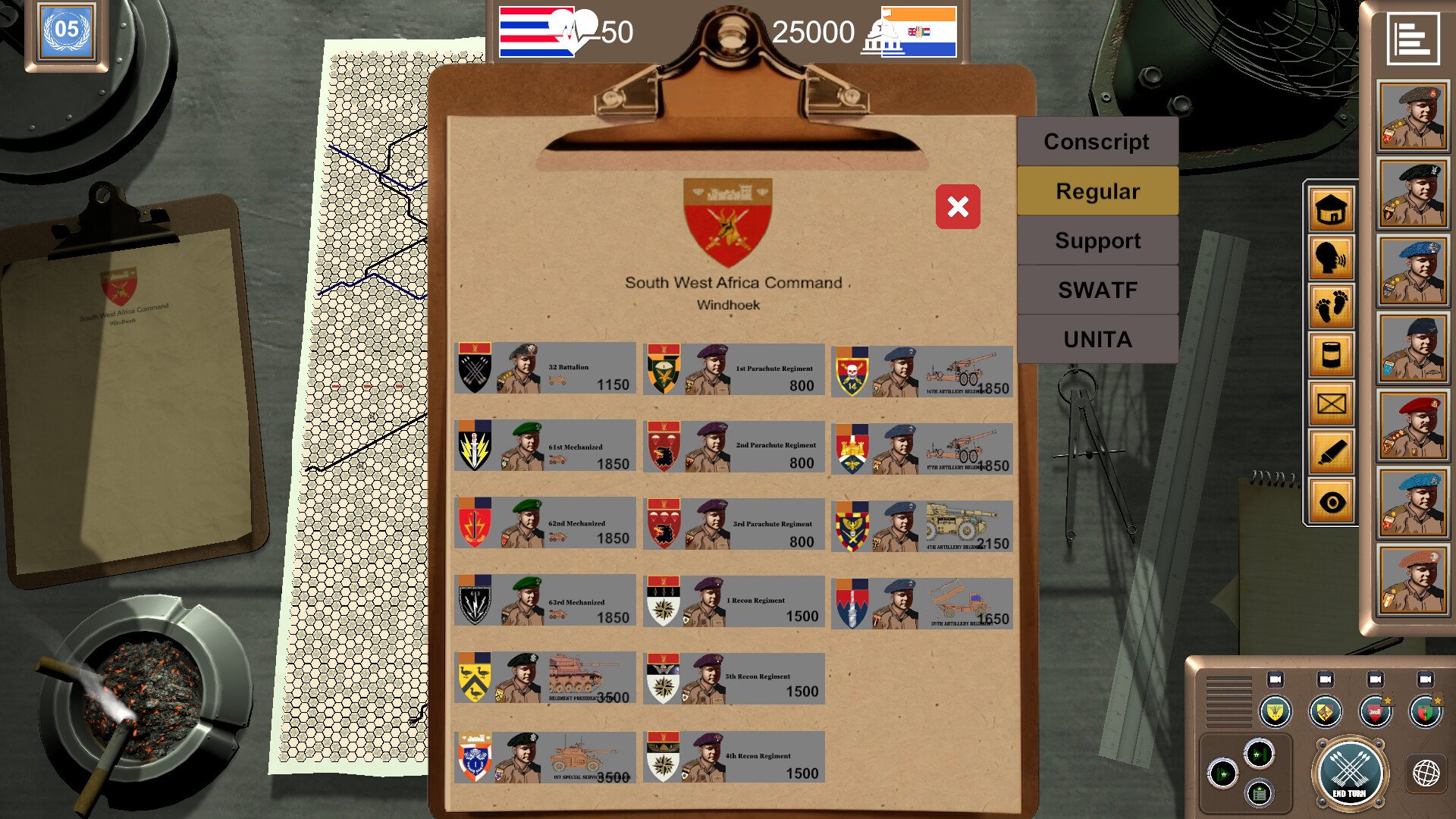
The feature list and screenshots suggest ESS’s ‘Coming Soon’ Early Access offering will have many mechanics in common with Afghanistan ’11. Assuming I can persuade Johan Nagel to spill beans, they’ll be information on similarities and differences in the next A2Z interview.
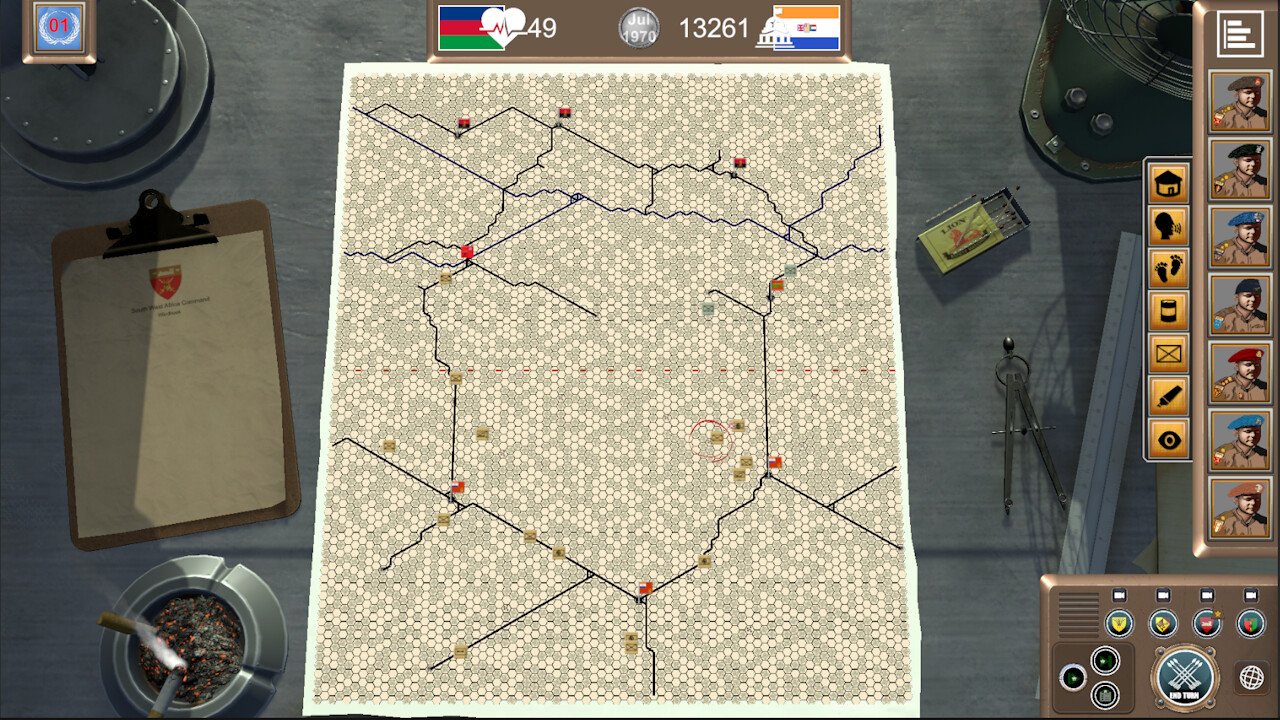
* * *
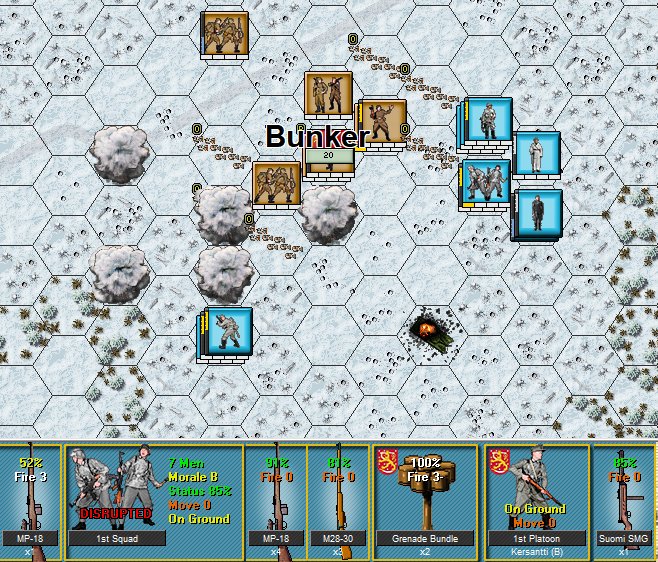
After a couple of diverting evenings spent in sticky central Africa I moved four thousand miles north to cooler climes. Winter War is one of three Squad Battles titles recently overhauled by Tilleriana inheritors Wargame Design Studio. Not having indulged in a while, I sought out the pdf-reliant ‘Getting Started’ scenario first.
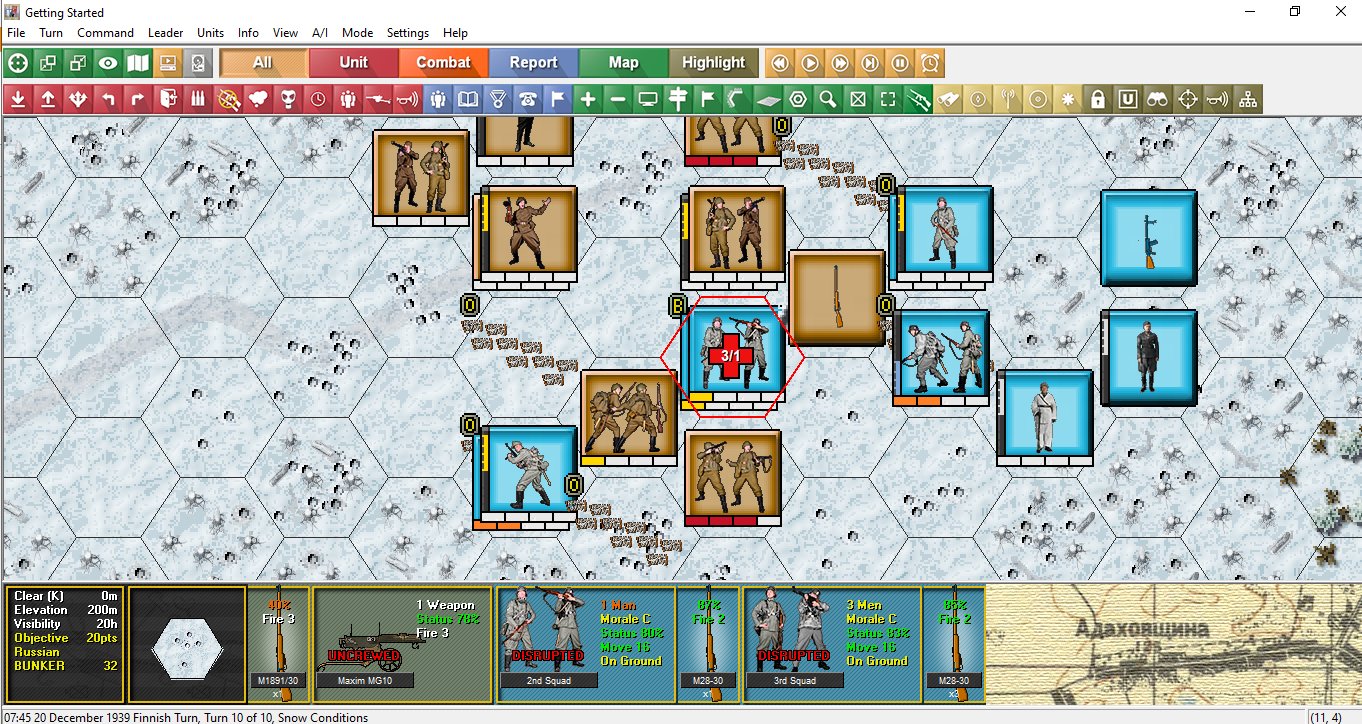
A ten-turn Finnish attack on a three-hex Soviet trench, it does a pretty good job of explaining SB’s fairly elegant brass tacks, but is also a strong candidate for computer gaming’s toughest tutorial. In only one of my half dozen attempts, did I manage to replace the Soviet flag on the VL with a blue Nordic cross, and the losses I suffered achieving this feat were so high, I still ended up technically ‘defeated’.
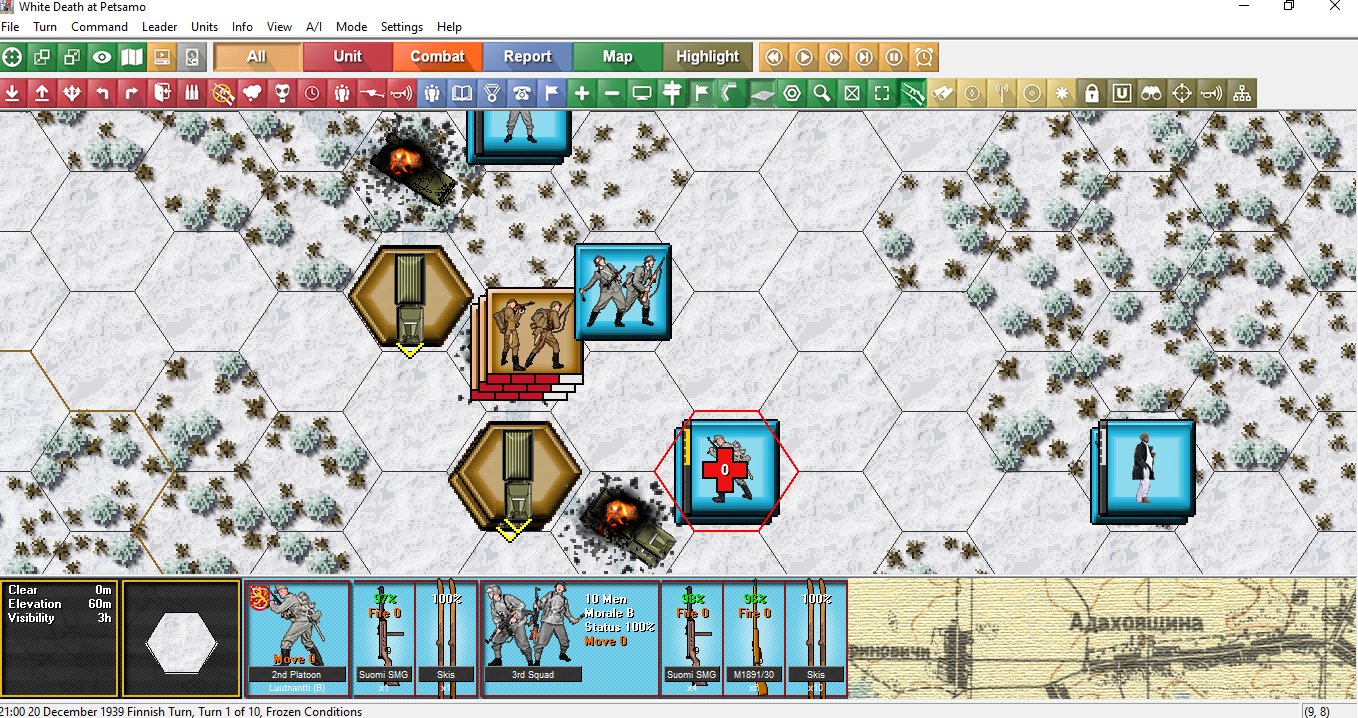
Fortunately, the majority of Winter War’s 58 scenarios are far more vincible. The Finns in ‘Getting Started’ must plod through open hexes clogged with deep snow in order to reach their goal. The ones in Petsamo, the ambush engagement I tried next, are on skis and have plenty of cover to work with. Surprised by their speed, their boldness, and their expertly hurled Molotov cocktails, the Ivans in the slow-moving convoy never really recovered from my initial onslaught. Might things have been different had I not KOed their BA-10 armoured car and GAZ ‘technicals’ early? Quite possibly, but top of my hit list, these potentially pivotal assets were amongst the first set ablaze.
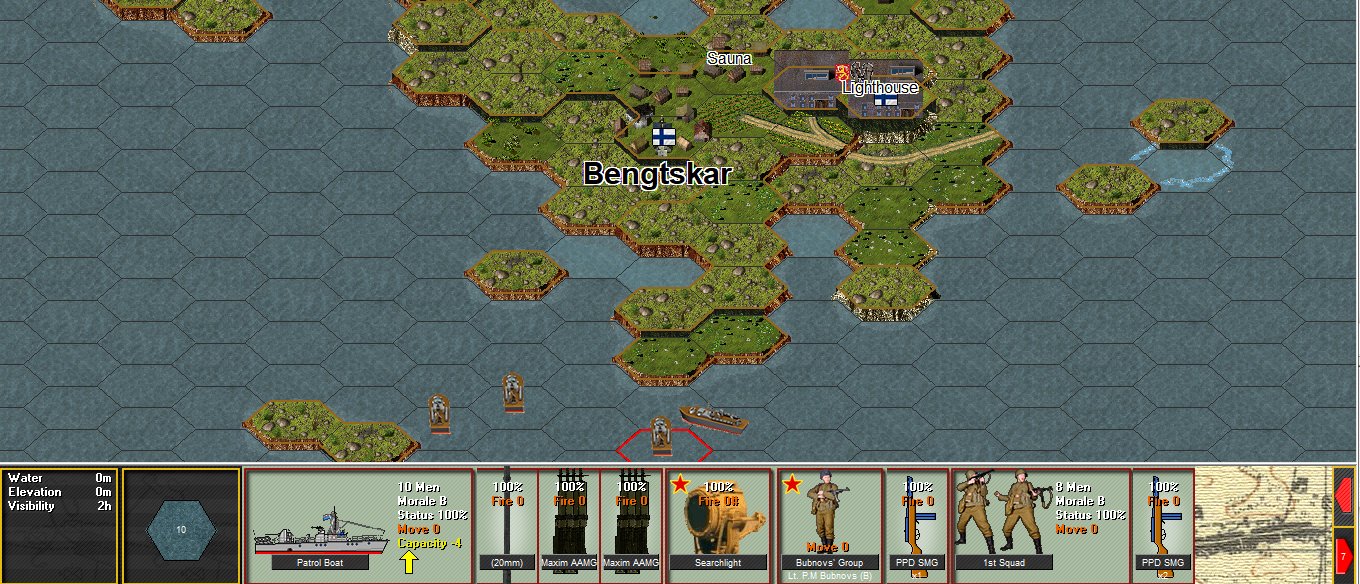
Rifling through the mission folder I really didn’t expect to find anything as in-tune with my seaside surroundings as ‘Bengtskar’. A twenty-turn recreation of a nocturnal Soviet attack on a small lighthouse-dominated skerry between Finland and Estonia, this scenario illustrates SB’s intimacy and flexibility very nicely.
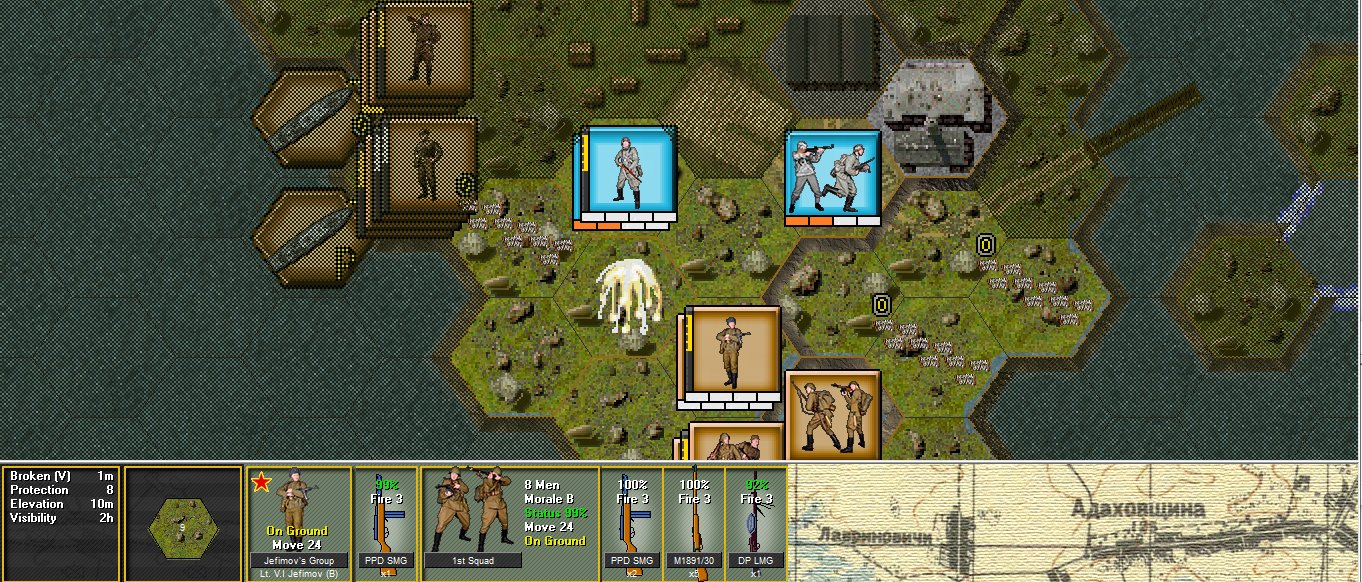
Things started quietly with four troop-laden Soviet patrol boats creeping towards the island’s rocky coast. I succeeded in getting most of my men ashore without raising the alarm, but the following turn all hell broke loose.
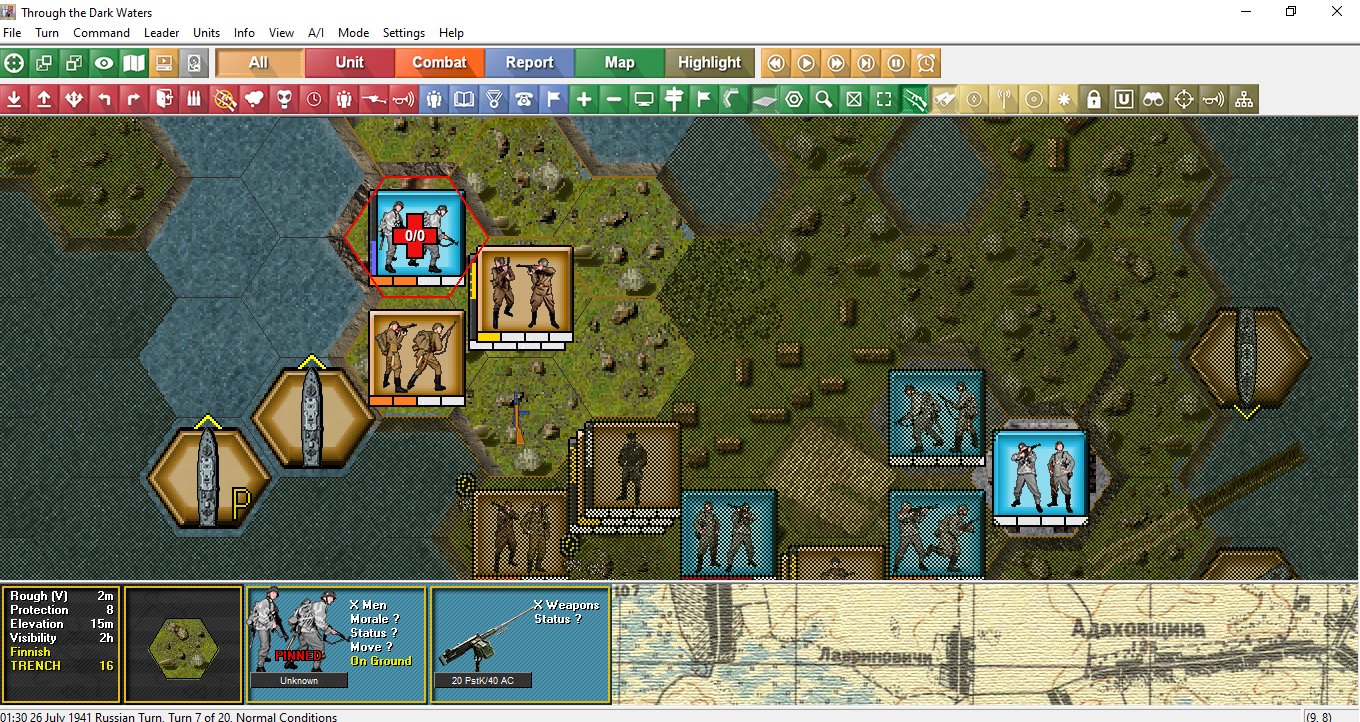
Despite withering fire from multiple defensive positions and a couple of small tactical gaffes on my part (one of my assault squad’s satchel charges was accidentally squandered on an MG nest near the southern coast, and an optimistic arty bombardment caused more Soviet casualties than Finnish ones) the attackers slowly closed in on their objectives. Compared to the firefights in many tactical wargames, SB’s are relatively slow-paced and bloodless. Troops under fire are far more likely to become pinned (a state that comes after ‘disrupted’ and before ‘demoralised’ on the game’s travails track) than take casualties, and frequently fusillades appear* to achieve nothing at all. You need to be persistent, patient, canny, and, sometimes, pretty aggressive (assaults are an important tactical tool) to fell foes and gain ground in SB.
* The game keeps combat algorithms close to its chest
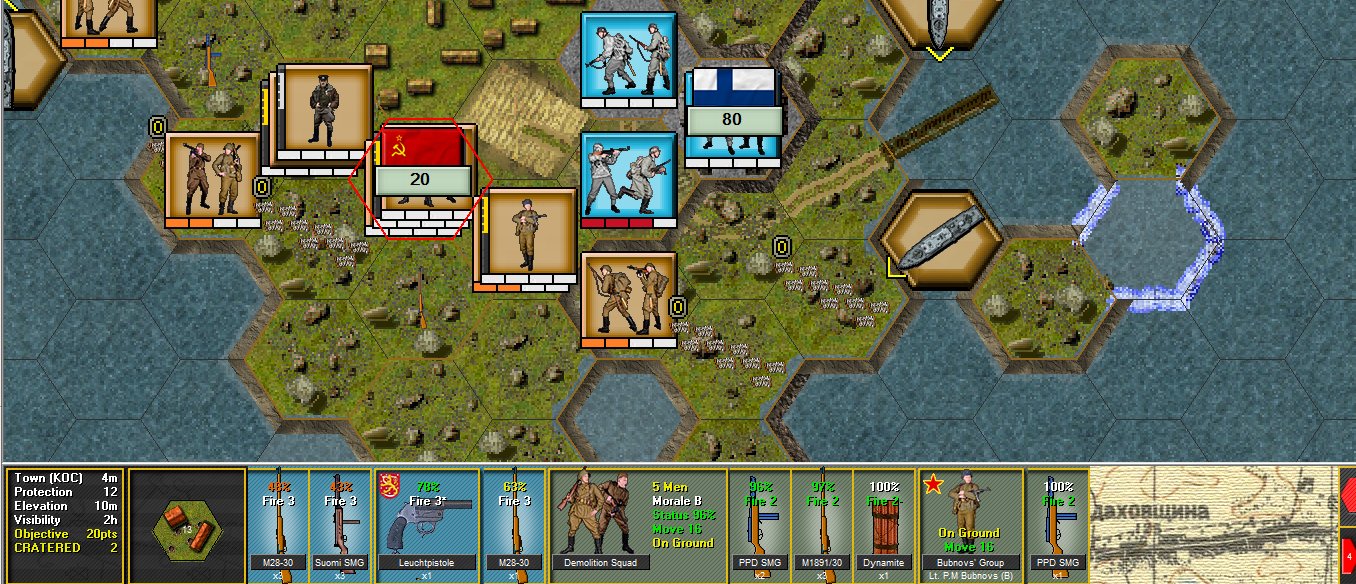
Thoughtful employment of the one-man leader units is vital to success too. Without the manually triggered motivational prompting of figures like Lieutenants Kurilov and Jefimov, I’d never have neutralised the entrenched 20mm cannon in the NW of the island. I’d never have overrun the fiercely defended secondary objective near the sauna. Thanks to some splendidly liberal equipment scavenging rules (abandoned/dropped weapons like the eight Finnish firearms in the above screenshot can be picked up) I could have used that cannon against its former owners if I’d wished to.
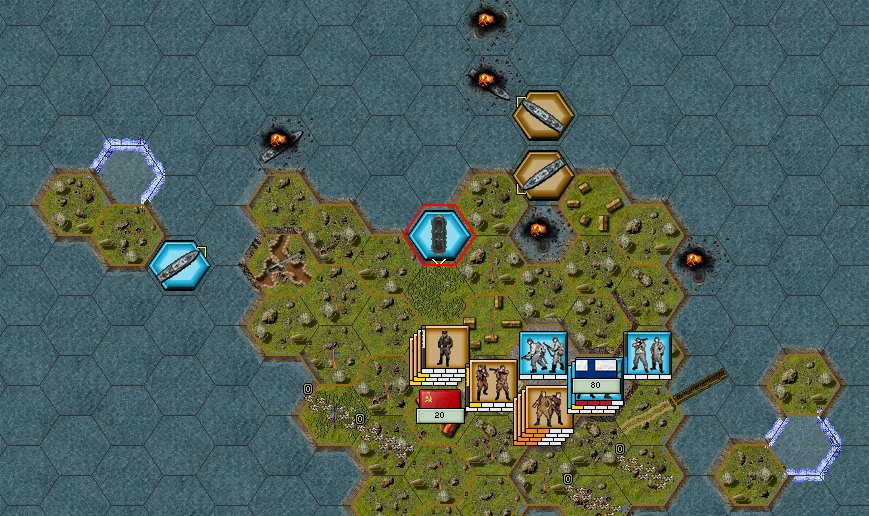
By the time the twentieth turn ended the island had been cratered by low-flying I-16s, a couple of my patrol boats were on fire, at least one Finnish gunboat was at the bottom of the Baltic, and, reinforced by a surprise counter-landing in the north, the stout stone lighthouse was still in enemy hands. Winter War decided I’d done marvelously. I, on the other hand, knew I’d somehow managed to snatch defeat from the jaws of victory.
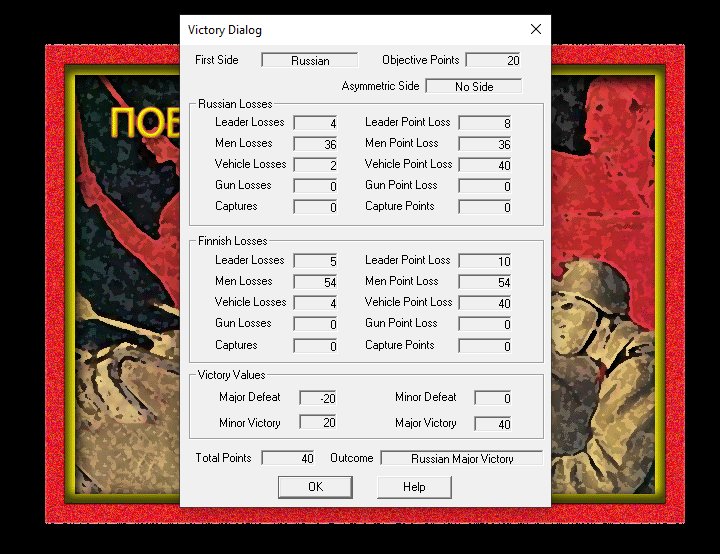

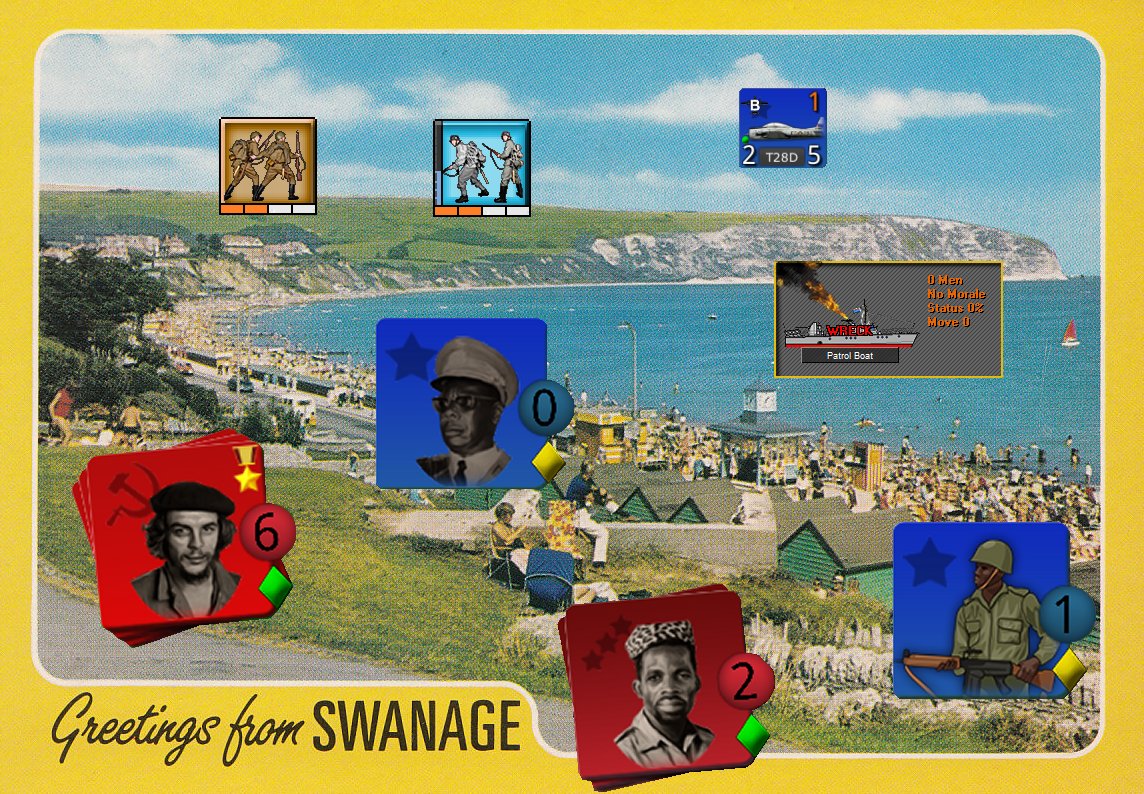
An SPI game on this (it might even have been called Winter War) was the second wargame I ever played (after Borodino). A fascinating subject.
I’ve now been reading you write about WATW modules and complaining about it’s computer player complacency for more than 5 years. It looks like there are over 50 DLC modules these days. What would you say are the top 3? It seems the WATW platform works best with asymmetrical or otherwise “non-standard” tactics, are there any that are genre bending in that regard?
Thanks Tim
>> What would you say are the top 3?
Hopefully, one day I’ll be in a position to answer this question with confidence. I’ve another ‘Violent Victoriana’-style article in the works which should give a decent overview of modules covering another era. Of the modules I’ve played, I remember losing to the AI in Byzantium 1116, Franche-Comte 1636, Persia 1856, Missouri 1861, Dublin 1916, Innsmouth 1928, and Rhodesia 1972. As challenge in WATW tends to depend on an uneven scenario setup, you’re unlikely to encounter a module that is hard to win from both sides.
Gotcha. “Complaining” was not the right choice of words, but I mainly used it for cheek and alliteration. I’ll still probably get analysis paralysis every time I open that Steam page and never play it.